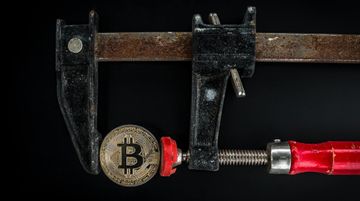The blockchain narrative has completely changed. What was once speculative is now foundational, with institutional money pouring into Real-World Asset (RWA) tokenization. A financial shift creates a dense, unprecedented target for sophisticated cybercriminals, putting every macOS user who handles digital assets at direct risk.
The cryptocurrency industry's in a state of rapid evolution. J.P. Morgan rebranded its technological platform to Kinexys, explicitly to accelerate the adoption of blockchain and tokenization into mainstream financial services. Meanwhile, Goldman Sachs is exploring spinning out its proprietary technology, GS DAP, intending for it to evolve into an industry-owned distributed solution. These moves are a clear signal that fintech's future isn't about fringe experiments. It's about the large-scale, proprietary deployment of blockchain technology to create a new financial infrastructure.
Defining the Blockchain Future of Fintech
The crypto industry had a colossal growth spurt in 2024, with the overall market cap jumping by 96.2%. The surge wasn't a meme-coin pump; it was the big players stepping in, legitimized by things like spot Bitcoin ETFs. Following the initial breakout, things cooled down a bit.
For the rest of the year, it's crucial to keep your eye on three things: how global money policies are changing, what fresh regulations are coming, and how major blockchain platforms like Bitcoin, Ethereum, and Solana are handling new updates. Stablecoins are also becoming a huge deal. They give people reliable, regulated digital cash, which is a direct pathway to turning low-risk, real-world assets like U.S. Treasuries into digital tokens. That's fueling the tokenization of low-risk, real-world assets (RWA) like U.S. Treasuries.
How RWA Crossed $30 Billion
Everyone talks about the price of Bitcoin, but the real news is the RWA market. It hit $30 billion by Q3 2025. That's a 10x increase in just three years. Growth isn't about hype; it's about institutional demand for stable, yield-bearing assets. That means high-quality assets like Tokenized Private Credit, which is the biggest piece of the pie at $17 billion.
According to Binance research, tokenized stocks on Ethereum surged to $275M in September. Then there are Tokenized U.S. Treasuries, sitting at $7.3 billion. They're acting as on-chain cash equivalents and collateral. Major exchanges are also getting in on the action. Binance, for example, now supports tokenized RWAs as off-exchange, yield-bearing collateral.
New Regulations Shaping Tokenized Finance
You can't have this kind of institutional commitment without clear rules. That's why the regulatory environment has matured so quickly. The European Union led the way with the beginning stages of implementing its Markets in Crypto-Assets Regulation (MiCAR) in early 2025. MiCAR provides a unified, transparent framework for the entire continent. The U.S. also saw a significant shift, with the Securities and Exchange Commission (SEC) creating a dedicated Crypto Task Force, led by Commissioner Hester Peirce, to provide greater clarity on digital asset regulation.
A new era has begun. But here's the kicker: the token is just a digital representation. RWA platforms still have to follow all the existing laws for securities and custody. The blockchain is a settlement layer, but the legal reality remains firmly in the real world.
Your Mac is Now a High-Value Target
All this institutional money flowing into tokenized assets has a dark side. It's turning your Mac into a prime target. The sheer value density, with assets like $17 billion in Private Credit and $7.3 billion in Treasuries, is a magnet for sophisticated criminals. Security analysis confirms that macOS infostealers exploded. They're not some amateur-hour viruses. They're purpose-built to swipe your crypto wallets and private keys.
Even cold storage isn't foolproof if the underlying operating system is compromised. Several critical macOS vulnerabilities were patched. A notable one, CVE-2024-54506, was an out-of-bounds access issue that could allow an attacker to cause arbitrary code execution within the Display Controller Processor. RCE flaws and sandbox escapes provide attackers with deep system access, which they can use to monitor transaction signing processes or steal keys intended for RWA custody.
A significant incident involved the reported theft of over $2.5 million in digital assets from a Ledger Nano S hardware wallet. This confirms that hardware wallets aren't inherently infallible and are susceptible to compromise through a flawed host computer. The multisig itself, the gold standard for high-value RWA custody, isn't a perfect defense. Attackers increasingly target the weakest link: the human signer and their operational environment. Tactics like social engineering and malware are used to compromise a signer’s Mac, allowing a bypass of the multisig protocol.
Final Verdict
The bottom line is simple: the future of fintech is here and institutional validation of blockchain doesn't protect you. The only way to securely participate in this new economy is to assume a zero-trust security posture, use multi-layered custody, and get your key-signing operations off your primary computer. A dedicated, air-gapped machine, ideally running Linux, is exclusively for signing transactions.
You should also be on an aggressive patching schedule for your software and OS. Authorities can trace transactions on public ledgers, meaning digital assets are perpetually at risk of being seized if they're later linked to criminal activities. The future of finance is here, and it demands that you become your own security expert.
